Reply To:
Name - Reply Comment
Whether you’re an occasional selfie-snapper or an obsessive-life-documenting-selfie king/queen, you would know that there is an abundance of smartphones in the market in all ranges at the moment to cater your needs.
If you love your selfies, or if you've now discovered the world that is "groupies", then you should definitely take a look at the new Oppo F3. With it's dual front camera, this is a smartphone that just screams "selfie!".OPPO is one of those brands that continue to heavily invest in the said feature and one of their latest offerings is the OPPO F3.
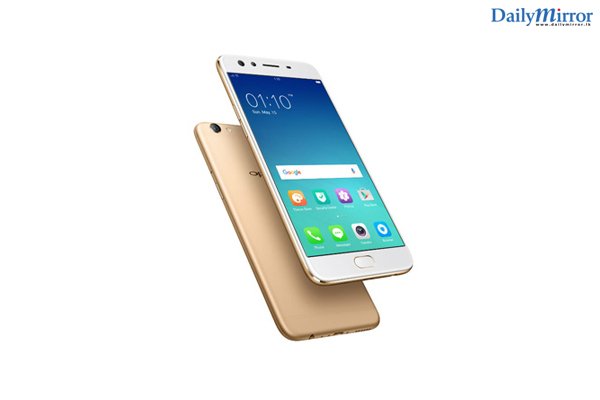
The company has put its foot on the gas, advertising its new selfie centric phones on all kinds of platforms. Oppo even sponsors the Indian cricket team, All this is done on the back of a few phones, of which, the Oppo F3 and F3 Plus seem to be the forerunners. There are other phones in the company’s arsenal as well, but at the moment the company’s focus seems to be on selfies. Now, whether you want a selfie centric phone is up to you, but in our books, a phone should be more than just selfies.
Design & Build
Oppo went with what other major smartphone manufacturers are following, giving it a metal and glass casing.Unfortunately, Oppo seems to be unwilling to innovate on its design. The Oppo F3 is good looking, but not new.
The dimensions of the device are important to note: 163.6 x 80.8 x 7.4 mm, as well as the large diagonal of 6 inches. The smartphone weighs in at 185 grams, so it's a little on the heavy side in comparison to other smartphones these days, nevertheless, a little weight gives the phone a premium feel in the hand.
On the front panel you will immediately notice one of the more distinctive features of this smartphone: the dual camera for selfies. The two sensors are placed in the upper left corner, next to the speaker for voice calls and to the proximity sensor. In the lower part of the front panel is the circular home button, which also includes a fingerprint reader. The edges curve in slightly, thanks largely to 2.5D glass.
To launch the F3 Plus you'll have to rely on the physical button on the right-hand side next to the slot for microSD + nano SIM or two nano Sim (it's your choice as it is a hybrid Dual SIM). On the left-hand side you'll find the dedicated volume button, which isn't easy to reach if you have small hands. The headphone jack and micro-USB port (sorry, Oppo decided against the Type C option) are all along the bottom, next to the speaker.
Display
Equipped with a 6-inch IPS LCD screen, with Full-HD resolution (1920 x 1080 pixels). The screen is covered with Gorilla Glass 5 and has an integrated eye protection mode that helps by placing less strain your eyes when you read the night.
Under direct sunlight the display is - unfortunately - disappointing. In order for it to be visible you'll need to set the brightness to maximum, and reflections do not help when you're trying to view any content. The colors are a bit saturated and it's not possible to modify things in the settings, as here it's only possible to adjust the brightness.
User Interface
Android 6.0 Marshmallow with ColorOS 3.0 layered on top of it, which is my biggest gripe with this phone, why is a phone in 2017 still using a two-year-old OS? Yes, the industry at large is doing it, but that’s only a sign of OEMs taking advantage of lack of consumer awareness.
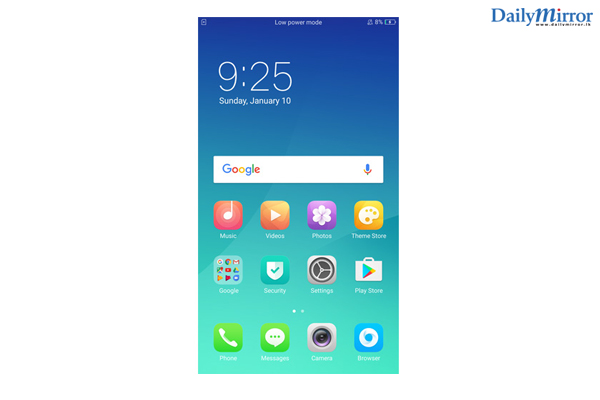
Other than that, ColourOS looks and tries to function like iOS. It’s easy to understand and quite colourful. For the convenience of familiarity, the icons designs and the settings layout is very similar to iOS. However, the quick toggle menu is still a drop down from the top. Oppo has also included gestures and things like app cloning so that one can easily make use of dual SIMs to use dual Whatsapp accounts for example. There is a theme manager, a RAM booster app, lock-screen magazine feature, cloud backup and a secondary app store. The UI also offers a set of simple yet good looking apps for music, videos, clock, photos, weather, file manager and even email.
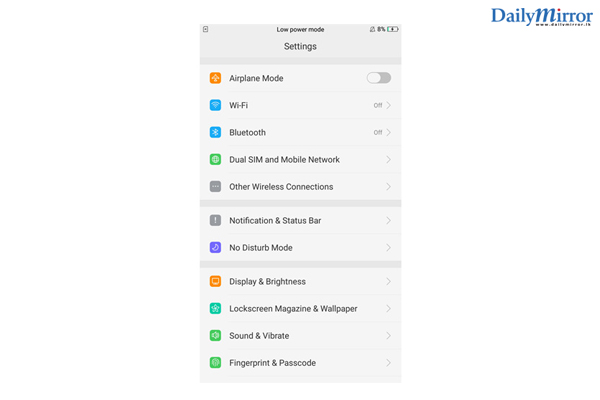
Performance
The Oppo F3 Plus is powered by a MediaTek MT6750T SoC octa-core CPU (8x1.5 GHz Cortex-A53), Mali-T860MP2. It comes with 4 GB of RAM plus 64 GB internal storage, though you can expand this up to 256 GB with a microSD card.
Based on the technical specifications, the F3 Plus is good to go for normal everyday use: there's no lagging or sudden crashes, apps open quickly enough and I didn't encounter any overheating when I played Real Racing 3. The browser can sometimes be a little slow, but overall the performance is really good. While the phone can handle almost all kinds of apps, one notices occasional stutters and sluggishness. This became quite apparent when I tried gaming on the phone. Games like Asphalt 8 ran at below 30 fps, while those that weren’t capped to 30fps, were usually getting as far as 40-45fps. It’s not particularly unplayable, but the experience is sub-par to say the least. You see lags and frame drops often.
There were also occasional app crashes and the camera app sometimes takes a little more time to take a selfie, which is supposed to be the prime feature of this phone.
On the other hand, call quality is decent and audio volume via the single speaker at the bottom is adequate. But, like every other smartphone in the same price bracket, audio quality is nothing worth writing home about. Via headphones, the phone really shines and offers good overall output.
Selfies
The Oppo F3 Plus was the best selfie centric smartphone we tested this year and the Oppo F3 tries to imitate it. There is a similar 16MP + 8MP dual camera setup at the front for solo and group selfies respectively. Like the F3 Plus, the 16MP camera here has 76.4 degree FOV and the 8MP camera has 120 degree FOV. Even the f/2.0 aperture is kept the same. That said, there are differences in the camera quality. The F3 tends to shoot slightly oversaturated colours, whereas the colour captured by the F3 Plus are nearer to being neutral. However, quality of overall images, including details, dynamic range and depth of field, remains almost at par, with the F3 Plus edging ahead in some pictures.

On its own, the Oppo F3 has good details, colours are pleasantly oversaturated, and noise is kept to acceptable levels. Photos are slightly soft, to remove skin blemishes and make selfies look better, but whether you like that will be a subjective opinion.
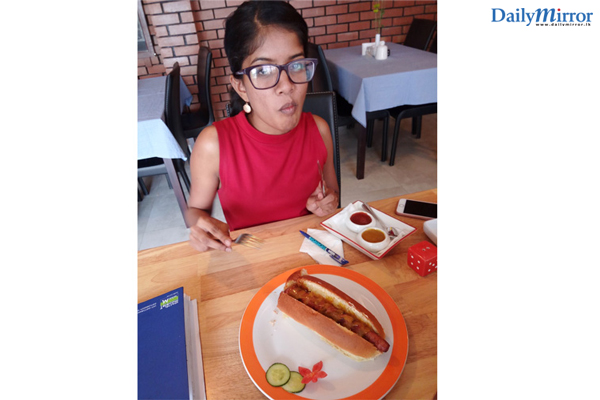
The Oppo F3 not only captures better details and colours in normal lighting conditions, but does a better job overall in low light as well. Photography enthusiasts may still find images lacking proper details and softer focus is somewhat annoying. But, at the end of the day, the Oppo F3 is now best selfie smartphone in its range. There are some niggles, like the camera occasionally takes a little time in post processing when you are taking bokeh images or when switching between various filters, but these things are not really deal breakers. Primary camera: Good, not great at the back, the Oppo F3 uses a tried and tested 13MP sensor, which takes good pictures for the most part. I observed decent colour reproduction and dynamic range, but softer photos that seem to be produced by the same algorithm as the selfies. In the case of the rear camera, it’s more of an issue though.
Battery
The 3200mAh battery on the phone can keep up with even the heaviest users and would last a normal work day easily, with at max 30 minutes of gaming. If you are not into gaming or don’t use navigation that often, the phone will definitely last you more than 12-15 hours in a day. Once you put it on charge, the phone gets fully charged under two hours and does not support any kind of fast charging, including Oppo’s own VOOC charging technology. It seems VOOC is another feature the company is reserving for its flagship devices.
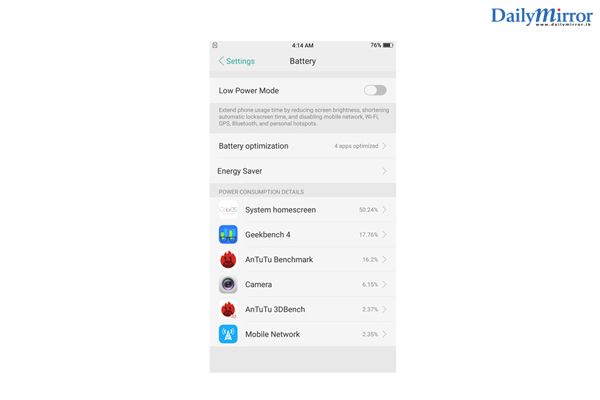
Bottomline: For selfies only
To sum it all, the Oppo F3 takes the best selfies of any phone under Rs. 40,000. However, it’s not a very good overall performer.
via Life Online - Zeeshan Akram